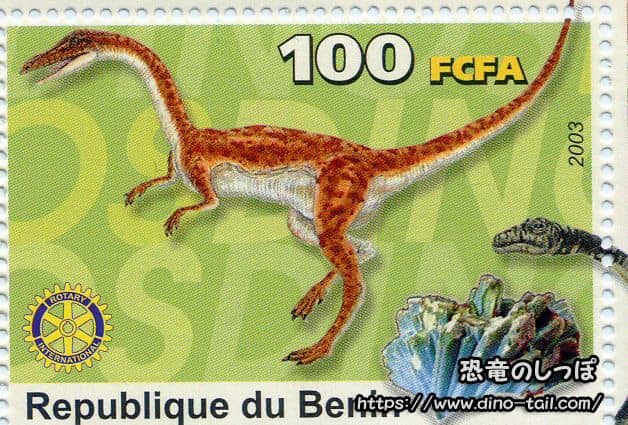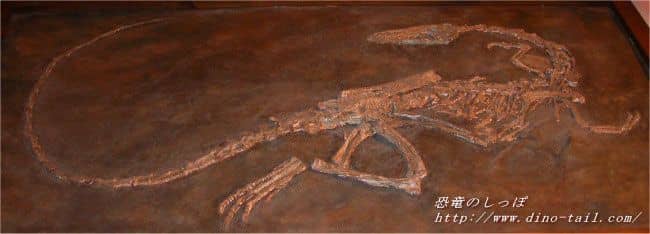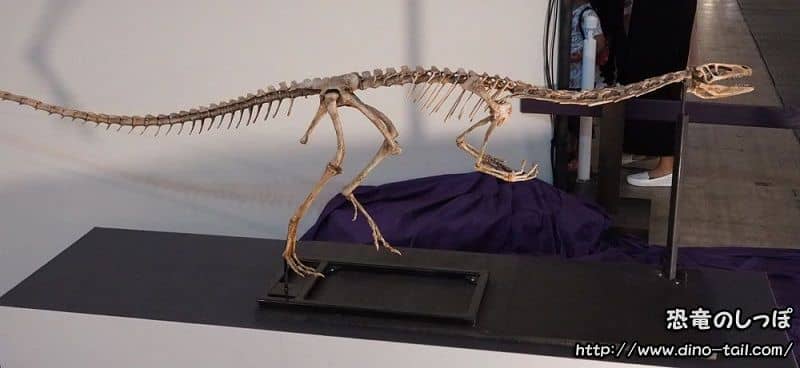About Coelophysis
| Scientific Name (Genus) | Coelophysis |
| Meaning of Name |
Hollow form
koilos (hollow) [Greek] - physis (form) [Greek] |
| Classification | Saurischia, Theropoda (Ceratosauria) |
| Total Length | Approx. 2.5m |
| Diet | Carnivorous |
| Period | Late Triassic |
| Species |
Coelophysis bauri
Coelophysis longicollis Coelophysis williston |
| Year of Paper Publication | 1889 |
| Genus Name Publication | Cope, E.D. (1889). On a new genus of Triassic Dinosauria. The American Naturalist, 23. |
Characteristics
Coelophysis is one of the earliest dinosaurs, appearing in the Late Triassic (about 210 million years ago).
It was about 2.5m long and weighed 15-30kg.
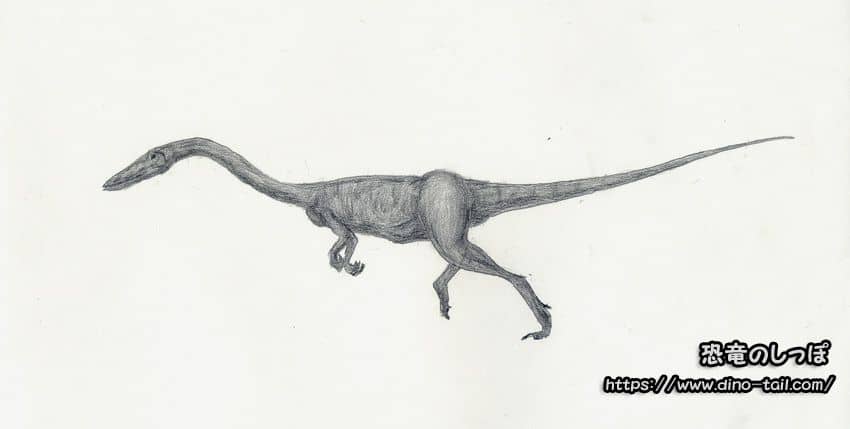
Hundreds of skeletons have been found in New Mexico, USA. It had a long neck, and its bones were hollow to allow for fast running.
Coelophysis had four fingers on its forelimbs (hands). One of these fingers was small and likely non-functional.
Theropods tended to reduce the number of fingers as they evolved (*1). This may have been a stage in the evolution from four fingers to three.
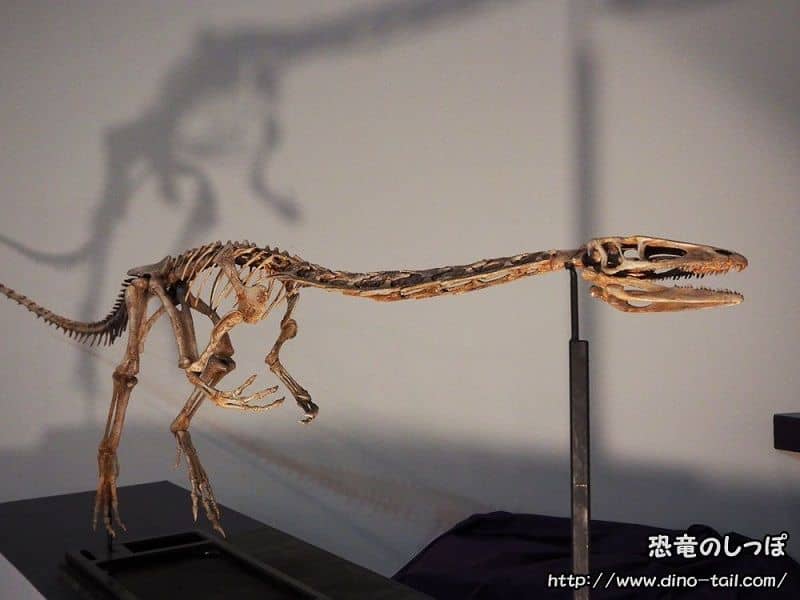
(*1) Simply looking at the timeline and the trend in the number of theropod fingers, we can see a reduction with evolution.
One of the earliest dinosaurs, Eoraptor, had five fingers.
Coelophysis had four fingers,
the Mid-Jurassic Ceratosaurus also had four,
the Late Jurassic Allosaurus had three,
and the Late Cretaceous Tyrannosaurus had two.
Secrets of a Lightweight Body and Excellent Vision
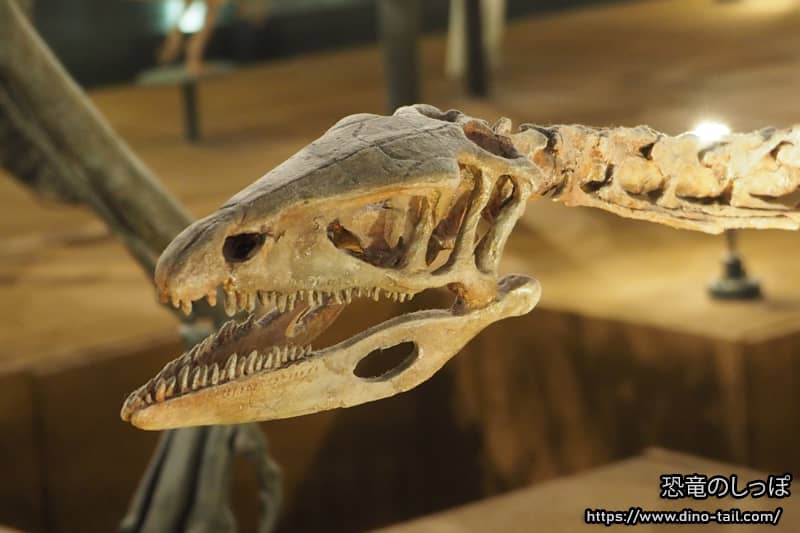
The forward-facing eyes enabled stereoscopic vision.
The 'hollow bones' that gave Coelophysis its name were hollow inside like those of birds, contributing significantly to its lightweight body. This lightweight frame, combined with a flexible, long S-shaped neck and powerful hind limbs, suggests it was an agile hunter that could quickly pounce on its prey.
Furthermore, the eyes of Coelophysis were positioned somewhat forward in its skull. This would have allowed for 'stereoscopic vision,' enabling it to accurately judge distances by seeing an object with both eyes. This excellent vision would have been a great advantage for catching small, fast-moving prey like insects and lizards.
The Ecology of Coelophysis
It is believed that Coelophysis lived in groups and hunted collectively. With hollow bones that reduced its weight to less than 30kg, it could move quickly on its long legs (its stride is estimated to have been 75cm).
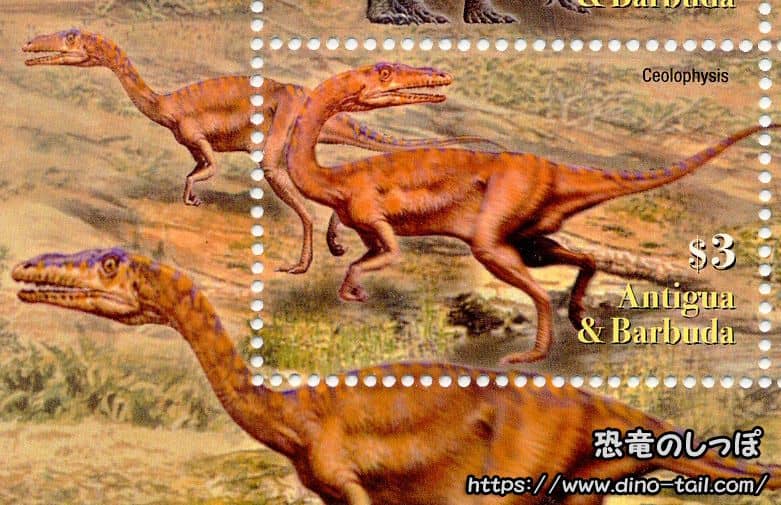
A theory of cannibalism once existed due to a fossil found in the stomach area that was thought to be a juvenile. However, it was later determined that the fossil in the abdomen was that of a crocodile, and the cannibalism theory was refuted. It appears to have preyed on insects and reptiles.
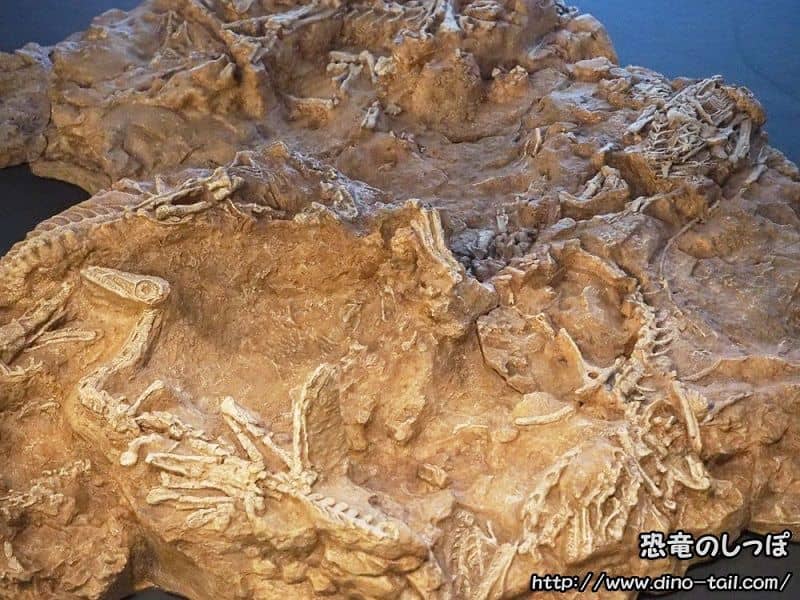
Discovered at the Ghost Ranch (Whitaker) quarry in the Chinle Formation, New Mexico, USA.
Discovery and Publication
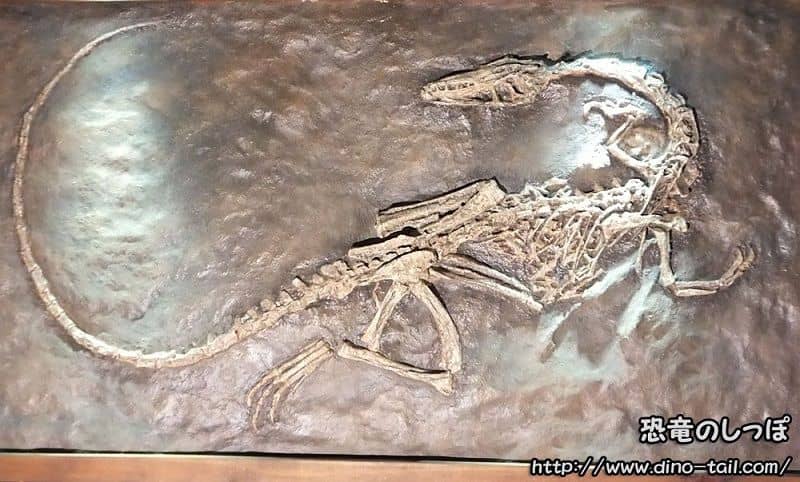
In 1887, Edward Drinker Cope identified a specimen discovered by an amateur fossil collector in the Chinle Formation of northwestern New Mexico as a species of the genus Coelurus. Coelurus was a genus described in 1879 by his rival in the Bone Wars, Othniel Charles Marsh (at the time, Marsh apparently did not consider Coelurus to be a dinosaur). Despite his animosity toward Marsh, Cope initially placed the specimen in the genus he had described.
However, Cope continued his investigation and confirmed differences in the vertebrae compared to Coelurus. Two years later, in 1889, he established the new genus Coelophysis and redescribed and reclassified the specimen he had identified.
The Dinosaur That Traveled to Space
Coelophysis is known as a dinosaur that has reached not only all over the Earth but also into outer space.
On January 22, 1998, a Coelophysis skull fossil from the Carnegie Museum of Natural History was sent into space aboard the Space Shuttle Endeavour (STS-89 mission). The fossil docked with the Russian space station Mir before returning safely to Earth.
It is a story that transcends vast spans of time and space, of a dinosaur that roamed the Earth in the Triassic period traveling to space some 200 million years later.
Coelophysis Stamp & Fossil Gallery
